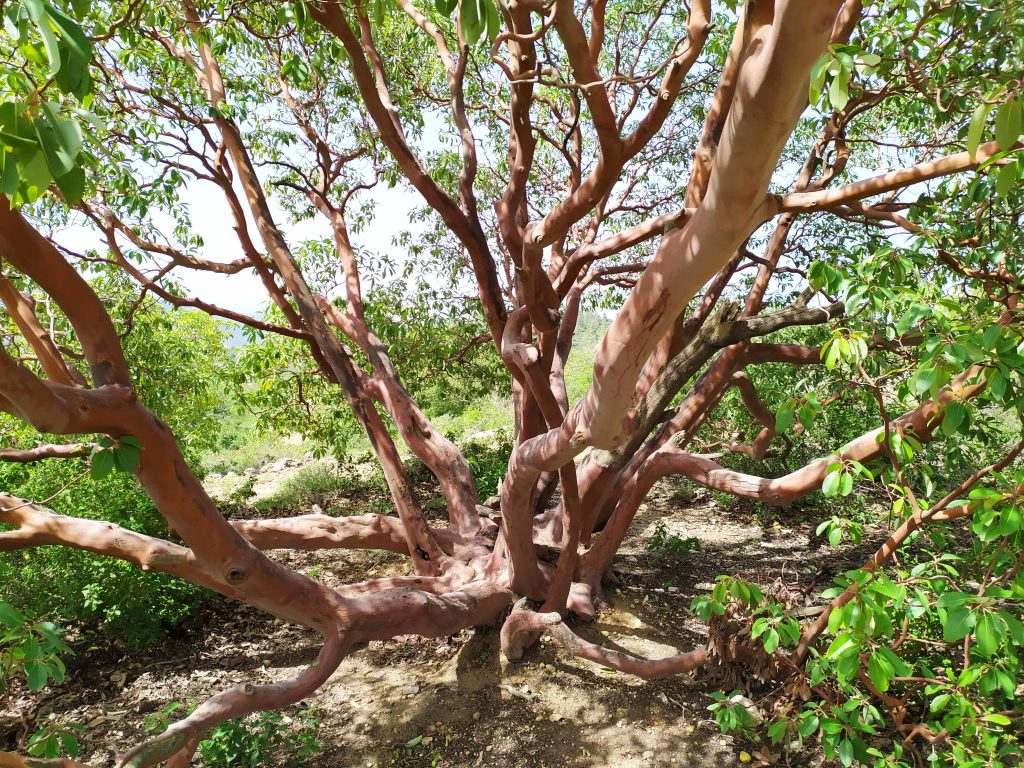
Arbutus andrachne (Eastern Strawberry Tree)
Family: Ericaceae | Origin: Mediterranean Basin
We have already written in the past that Tu B'Shevat is not the perfect date for planting trees – deciduous fruit trees would be happy to be planted a little earlier and subtropical trees such as citrus are better planted in spring when the weather warms up.
One tree that is really happy to be planted in this season is the local Strawberry Tree (Ktalav in Hebrew), which is the only representative of the heath family (which also includes blueberries) that grows wild in Israel.
Arbutus andrachne is undoubtedly one of the most beautiful wild trees in Israel and is familiar to anyone who travels in the Judean Mountains, Carmel and the the Galilee. It is a small tree (6 x 6 meters at maturity after many years and there are also a few larger trees), with Large, shiny leaves, smooth and beautiful red trunks and small red berries that are delicious to birds and humans.
The tree grows well in full sun and full shade and is resistant to the cold and winds of the mountain region.
In nature, this tree grows in basic soils with poor drainage and high water retention, and thus survives the long, dry summer. It is helped by mycorrhizal fungi that live with it in symbiosis and provide it with minerals in these special soil conditions.

Because of its durability and beauty, its size, which is suitable for small gardens, and its local origin, it is sought after as an ornamental tree in mountain gardening and can also be successful in the lowlands and coastal plains, but there is a catch – the tree has a sensitive root system, especially in its early years, and the death of trees in the first year after planting in the garden is not uncommon.
?So what do you do
When to plant? If you don't have to, don't plant it in the summer.
We recommend planting in the cold season from October-November to April-May, with preference for autumn and winter.
Be careful with the root ball: A tree grown in a planting bag is planted with the bag after cutting several long cuts in the bag with a sharp knife. A tree from a container is removed very carefully without shaking and planted directly in the planting hole.
Watering: It is advisable to plant in well-drained soil with deep irrigations. A young tree will be happy to be watered 2-3 times per week.
The right location for planting: In areas warmer than the high mountains try to place near a northern wall or near large trees so that the young tree will grow in partial shade.
Light: from full shade to full sun.
Mulching: Cover the soil around the tree with organic matter, but leave a clear circle 10 cm from the trunk to prevent root neck rot.
Be alert to any problems! The local Strawberry Tree is generally not forgiving and it is very important to detect problems as early as possible.
!!You always dreamed of growing this tree in a pot? – Forget it
A final tip: Let it grow several trunks from the ground. In nature, most trees also grow as multi-trunk trees and their main beauty is in their twisted and colorful trunks.
Don't forget its cold and winter-loving relatives: The Western Strawberry Tree with its compact form and the beautiful hybrid Marina Strawberry Tree.

